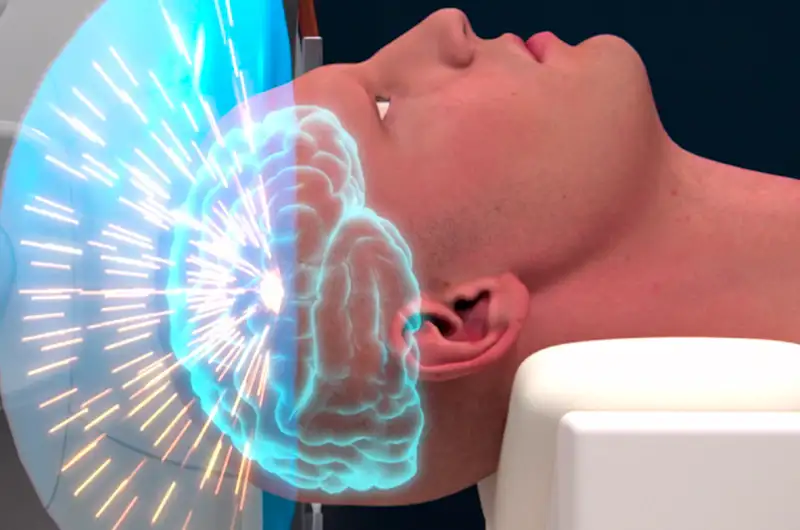Parkinson's Surgery
"The ideal candidate for a subthalamotomy is the patient with symptoms and signs of Parkinson's that are eminently unilateral and have been present for several years, as well as those who, for some specific reason, cannot have a stimulator implanted".
DR. LAIN HERMES GONZÁLEZ SPECIALIST. NEUROSURGERY DEPARTMENT

Surgery for Parkinson's disease is indicated when drug treatment fails to control the patient's symptoms throughout the day.
It is performed with deep brain stimulation. To achieve this, high frequency stimulation is performed in a small part of the brain called the subthalamic nucleus by placing electrodes. Through electrical impulses, it is possible to inhibit the part of the brain that is hyperactive and causes the disease.
Parkinson's is a disease without cure at present, but the benefits obtained through surgery are clear: it achieves a regression of the disease equivalent to years of evolution. In particular, there are improvements in movement, as well as a decrease in the rigidity and tremors of patients.
It also makes it possible to reduce medication, which avoids the psychiatric side effects of the drugs.

When is Parkinson's surgery indicated?
Surgery is performed on those patients who do not tolerate drug treatment well or do not find it effective, as well as on those who are particularly incapacitated by the disease.
The surgical success is related to the selection of the candidate, the good placement of the electrode in the brain and the achievement of a good stimulation and medication.
Most frequent indications for this treatment:
Are you diagnosed with Parkinson's?
Surgical treatment may be indicated
HIFU, treatment of tremor and other Parkinson's symptoms without surgery
The Clinica Universidad de Navarra incorporates the most advanced model of high intensity ultrasound for the treatment of patients with tremor of Parkinson's disease.
How is Parkinson's surgery performed?
Parkinson’s surgery procedure
The first step consists of performing a cerebral magnetic resonance, whose images are later used by a neuronavigation program. The MRI is used to calculate the coordinates of the area where the stimulating electrodes will be inserted.
A small incision is made in the scalp and then a hole of approximately 1 cm is opened in the skull (stereotaxy). Thanks to the orientation offered by an electrophysiological record of neuronal activity, the exact point in which to place the electrical stimulator is located.
The intervention is carried out under local anesthesia and the patient is conscious during its development, so you can work with the surgical team to know the effect of the stimulation before the final implantation of the electrode.
The second part of the treatment is carried out a few days later under general anesthesia and consists of placing the connection wires and the pacemaker or battery that supplies the electrical stimulation under the skin. Usually, the pacemaker is inserted under the collarbone.
Postoperative recovery
Deep brain stimulation is a reversible intervention in case of side effects or if the result is not as expected.
After the surgery, the patient must go to periodic controls with his neurologist. Sometimes, if the symptoms change, it may be necessary to reprogram the stimulator.
Therapeutic alternatives
There is another therapeutic alternative indicated for patients who present predominantly unilateral symptoms and signs of Parkinson’s over several years of progression, as well as for those in whom, for some specific reason, it is not possible to implant a stimulator.
This technique is called subthalamotomy and consists of performing a controlled thermal lesion in the motor area of the subthalamic nucleus responsible for the patient’s symptoms.
Where do we do it?
IN NAVARRA AND MADRID
The Department of Neurosurgery
at the Clínica Universidad de Navarra
The Neurosurgery Department has specialists with a great deal of experience in care and research and the most advanced technology.
We are the first Spanish center that incorporates high field intraoperative magnetic resonance (3T). This allows the maximum precision and control in cranial surgery.
We are the Spanish medical center with the most experience in Parkinson's surgery by means of deep brain stimulation. We have the latest technology with localized ultrasound (HIFU) and extensive experience in treating essential tremor and Parkinson's disease without an incision.
Treatments we perform
- Alterations in the circulation of the cerebrospinal fluid
- Infusion Pumps
- Epilepsy Surgery
- Deep brain stimulation
- HIFU, high intensity ultrasound
- Trigeminal Neuralgia
- Pediatric Neurosurgery
- Neuronavigation of the spine
- Spine Pathology
- Brain Tumors
- Pituitary Tumors

Why in Navarre?
- The first Spanish center with a high field intraoperative magnetic resonance (3T).
- Precision and minimally invasive surgery.
- Experts in the use of HIFU for the treatment of tremor.





